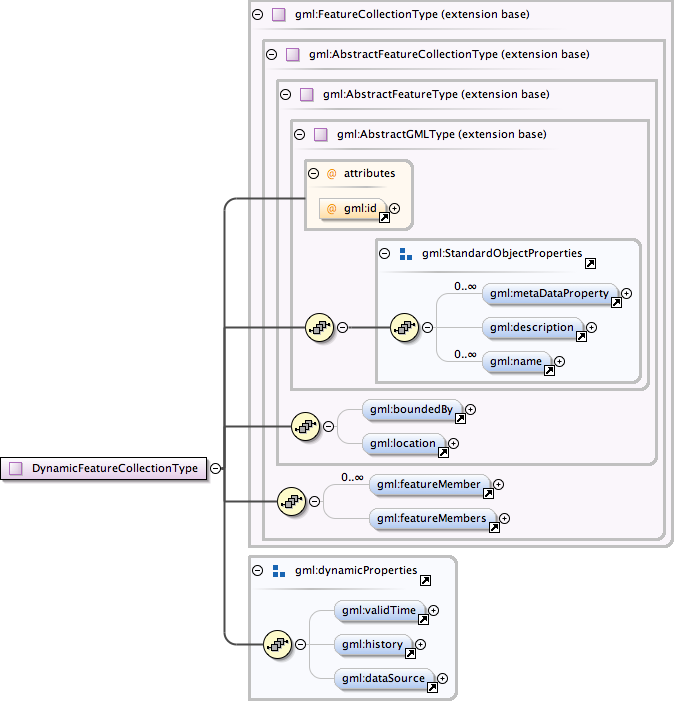| Namespace | http://www.opengis.net/gml | |||||||||||||
|
Annotations
|
|
|||||||||||||
|
Diagram
|
 |
|||||||||||||
| Type | extension of gml:FeatureCollectionType | |||||||||||||
| Type hierarchy | ||||||||||||||
| Model | gml:metaDataProperty* , gml:description{0,1} , gml:name* , gml:boundedBy{0,1} , gml:location{0,1} , gml:featureMember* , gml:featureMembers{0,1} , gml:validTime{0,1} , gml:history{0,1} , gml:dataSource{0,1} | |||||||||||||
| Children | gml:boundedBy, gml:dataSource, gml:description, gml:featureMember, gml:featureMembers, gml:history, gml:location, gml:metaDataProperty, gml:name, gml:validTime | |||||||||||||
|
Attributes
|
|
|||||||||||||
|
Source
|
|
|||||||||||||
| Schema location | http://schemas.opengis.net/gml/3.1.1/base/dynamicFeature.xsd |